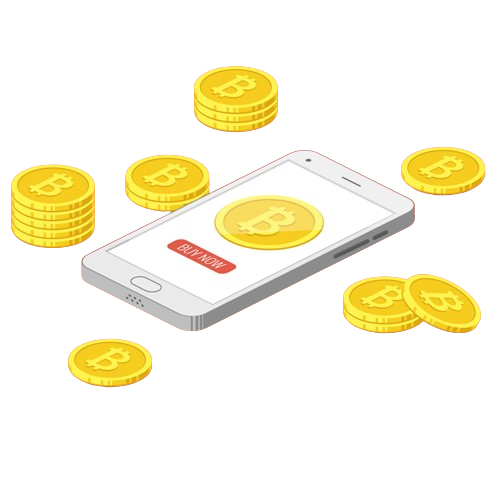
After reaching your price targets or portfolio allocation limits with Bitcoin, you’ll eventually want to take some chips off the table by converting holdings into fiat currency. While buying Bitcoin has gotten much easier, cashing out BTC directly to your bank still requires a few simple steps. In this guide, we’ll explore efficient methods for withdrawing Bitcoin profits into your checking or savings account.
Choosing A Crypto Exchange
The first step is finding a reliable exchange that supports fiat currency withdrawals to bank accounts. For US traders, some top options include Coinbase, Gemini, Kraken, and FTX US. These exchanges undergo regular financial audits, hold full regulatory licenses, and have banking relationships supporting smooth fiat off-ramps. Avoid less reputable exchanges when cashing out significant sums.
Going With A Regulated Exchange
When cashing out Bitcoin to your bank, only use prominent regulated exchanges. Both exchanges hold Bitlicenses in New York, regarded as the strictest state licensing regime. This provides oversight, transparency, and accountability. The biggest risk of crypto remains on/off ramping to traditional finance. Trust-regulated exchanges are explicitly approved to interface with the traditional banking system.
Sending Bitcoin To The Exchange
Once signed up at a selected exchange, navigate to the Bitcoin deposit address and QR code. Send your Bitcoin holdings from your existing Bitcoin wallet to the exchange’s provided address. Double-check the full address before confirming withdrawal. Transactions may take roughly 30-60 minutes to fully confirm on the Bitcoin network before appearing in your exchange account. Be patient.
Converting Bitcoin Into USD Balance

Once Bitcoin lands in your exchange account, navigate to the trading interface. Look for BTC/USD trading pairs and place a market order to convert your specific BTC amount into US dollars.
Use limit orders if seeking to achieve a certain sale price. Once executed, your account balance will reflect the USD amount while Bitcoin is sold off.
Withdrawing USD From Your Bank
Navigate to the USD withdrawal page within account settings. Link your bank account by providing the routing and account numbers. Confirm small test transfers before withdrawing larger amounts. Enter the withdrawal amount in USD to send to a bank account. Double-check bank details before confirming. Transfers usually arrive in 3-5 business days.
Keeping Records For Tax Reporting
Whenever cashing out crypto gains, be sure to download all transaction records for tax reporting. Exchanges provide CSV files outlining your trading history and cost basis. Hold these files for use later when preparing crypto gains/losses tax calculations. Abiding by “know your customer” regulations, exchanges will also issue 1099 forms if activity exceeds reporting thresholds.
Being Aware Of Exchange Limits
Exchanges impose daily, monthly, and total lifetime withdrawal limits to manage risk and fraud. These start low but increase over time as you prove legitimacy. Be aware of your verification level on the exchange, as higher tiers raise limits substantially. Cashing out very large amounts may require opting into over-the-counter (OTC) exchange desks offered by major exchanges.
How To Avoid Exchange Withdrawal Delays
While unlikely, some users experience delays or account freezes when withdrawing to bank accounts suddenly. This can occur when exchanges suspect fraudulent activity or cannot verify the source of funds. You can avoid issues by building exchange history over time, enabling 2FA security, passing advanced verification, and keeping detailed records demonstrating how Bitcoin was acquired in the first place.
Using Paypal Instead Of Direct Bank Transfers

Some exchanges allow cashing out to PayPal instead of bank accounts. This provides an alternative, especially for beginners. However, PayPal limits remain much lower. Withdrawals cost 1% and PayPal can freeze funds related to crypto.
Overall, direct bank transfers remain the preferred fiat off-ramp method despite taking longer and undergoing account reviews.
Being Patient During High Volatility
When Bitcoin prices spike or crash suddenly, exchanges may halt withdrawals temporarily or disable trades to manage extreme volatility. This prevents exploiting wild price swings. Be patient during major rally manias or flash crashes, as regulated exchanges act to enforce orderly markets. Price stability will return, allowing withdrawals to resume. Manage expectations during turbulence.
Avoiding Shady Exchanges And P2P Sites
When cashing out crypto, only utilize reputable mainstream platforms, never random peer-to-peer sites or shady offshore exchanges. These introduce massive counterparty risk, fraud exposure, price manipulation, exorbitant fees, and other pitfalls. Don’t let the lure of avoiding ID verification entice you into using disreputable sites. This undermines the entire point of interfacing with the banking system.
Choosing Simplicity Over Optimization
Resist trying to micro-optimize methods for cashing out or shaving pennies on fees. The simplest, most direct transfer incurs minimal costs. Attempting complex concatenations of money laundering techniques like smurfing or chain-hopping only raises suspicions and risks account closures. Keep cash-out methods simple, transparent, and fully compliant. Optimization breeds problems.
Conclusion
Cashing out Bitcoin profits to your bank account simply involves finding a trusted regulated exchange, withdrawing BTC to your account, converting to USD stablecoin, and completing a bank wire transfer. While you must exercise more patience with bank transfers compared to crypto transactions, the fiat off-ramp process remains straightforward with mainstream regulated exchanges. Take proper records and comply fully with taxation to smoothly integrate your Bitcoin profits into the traditional banking system.